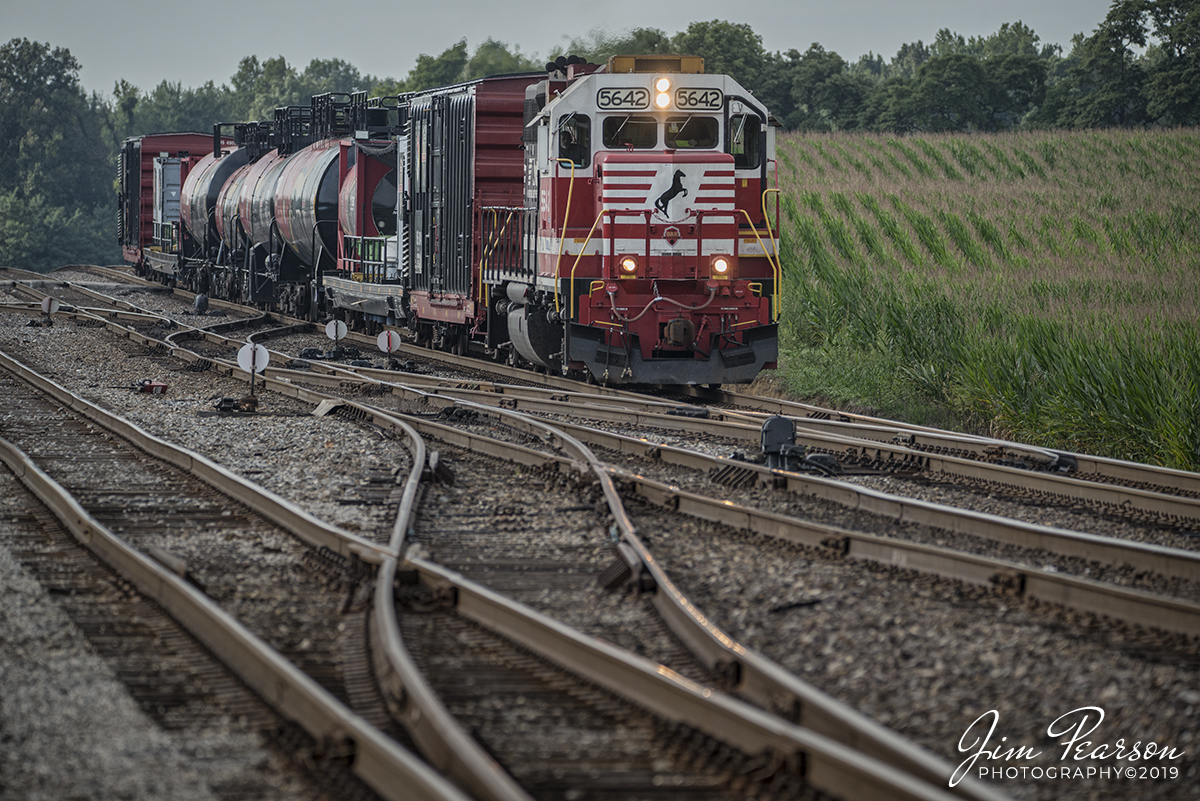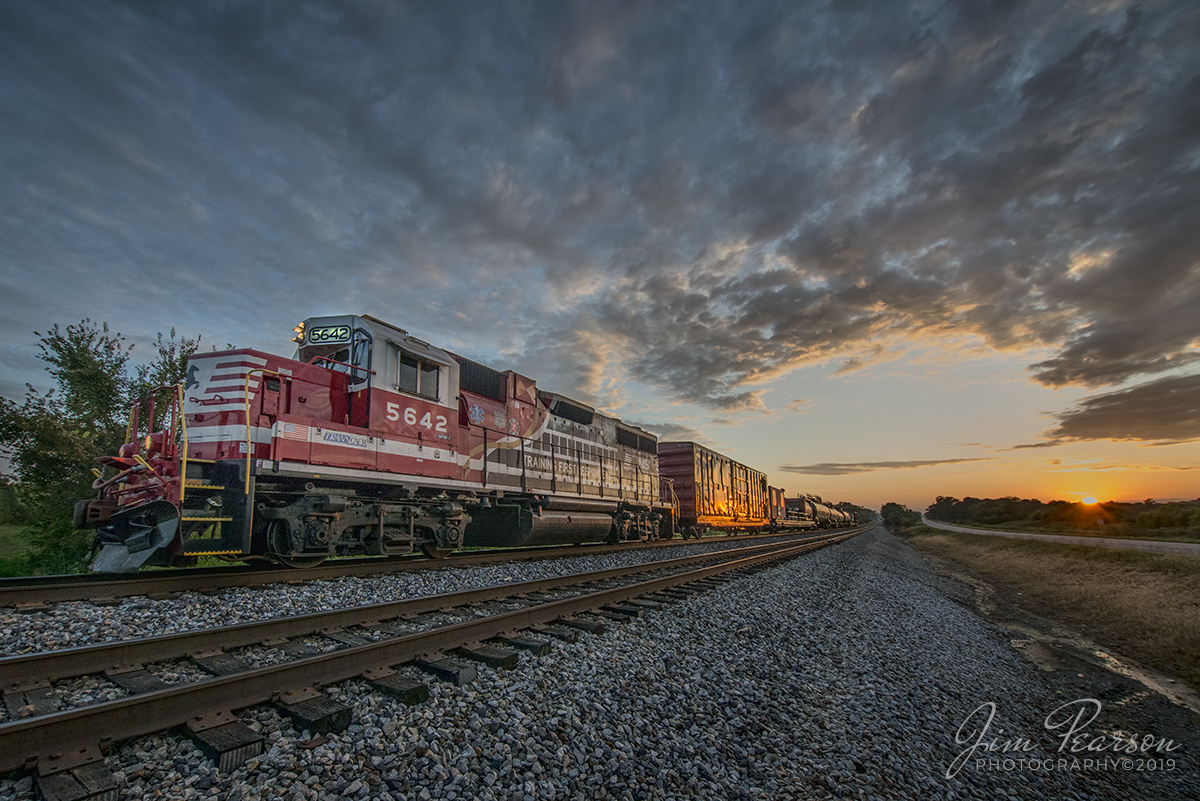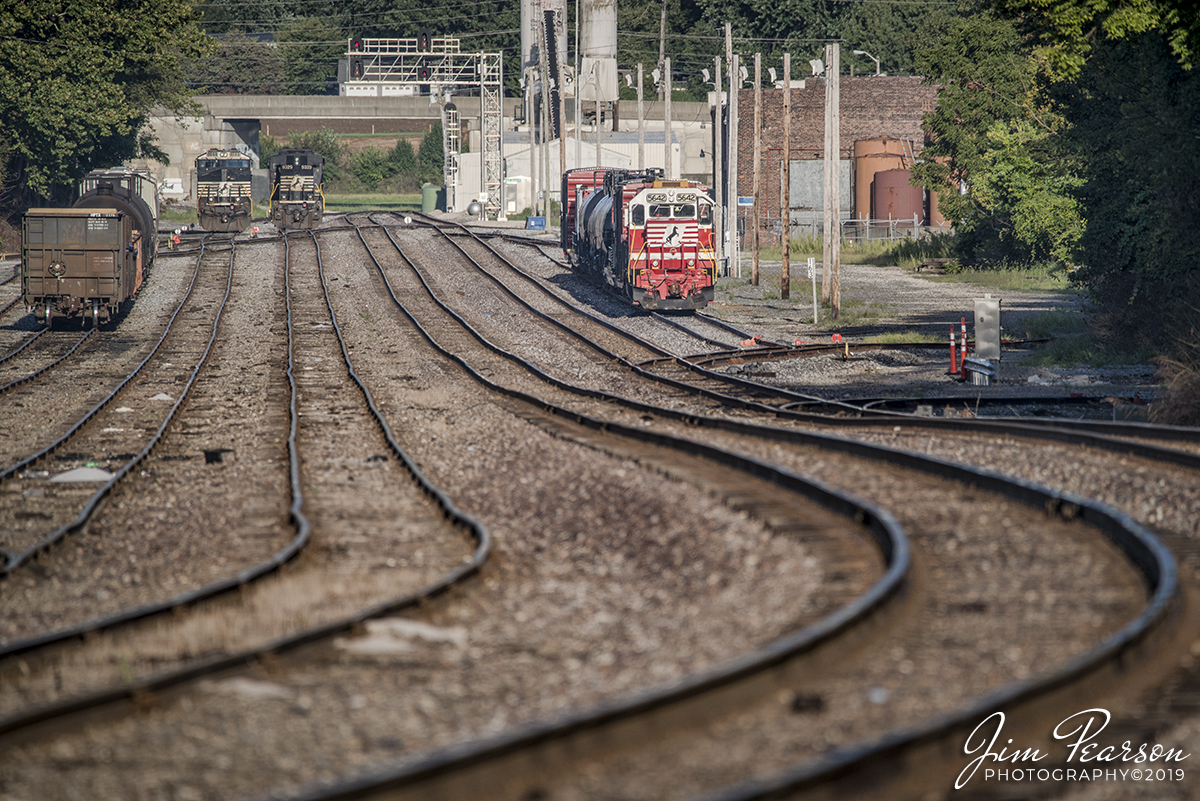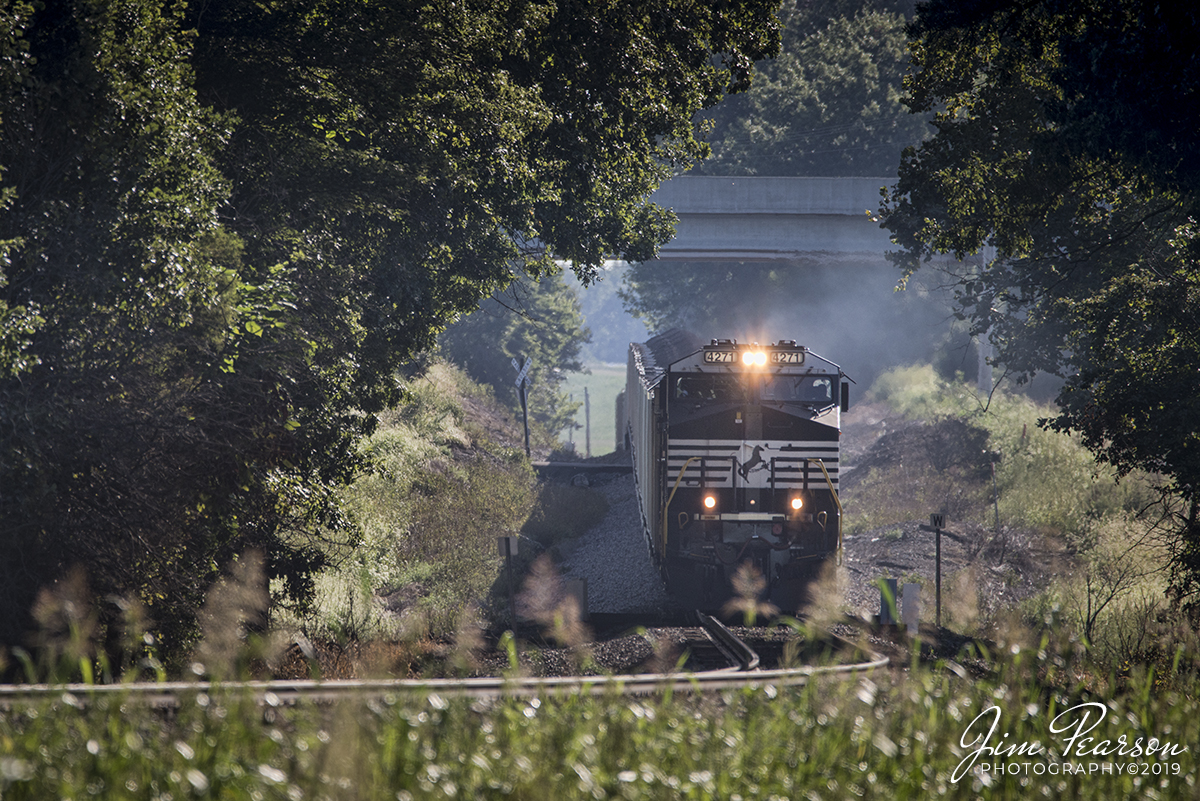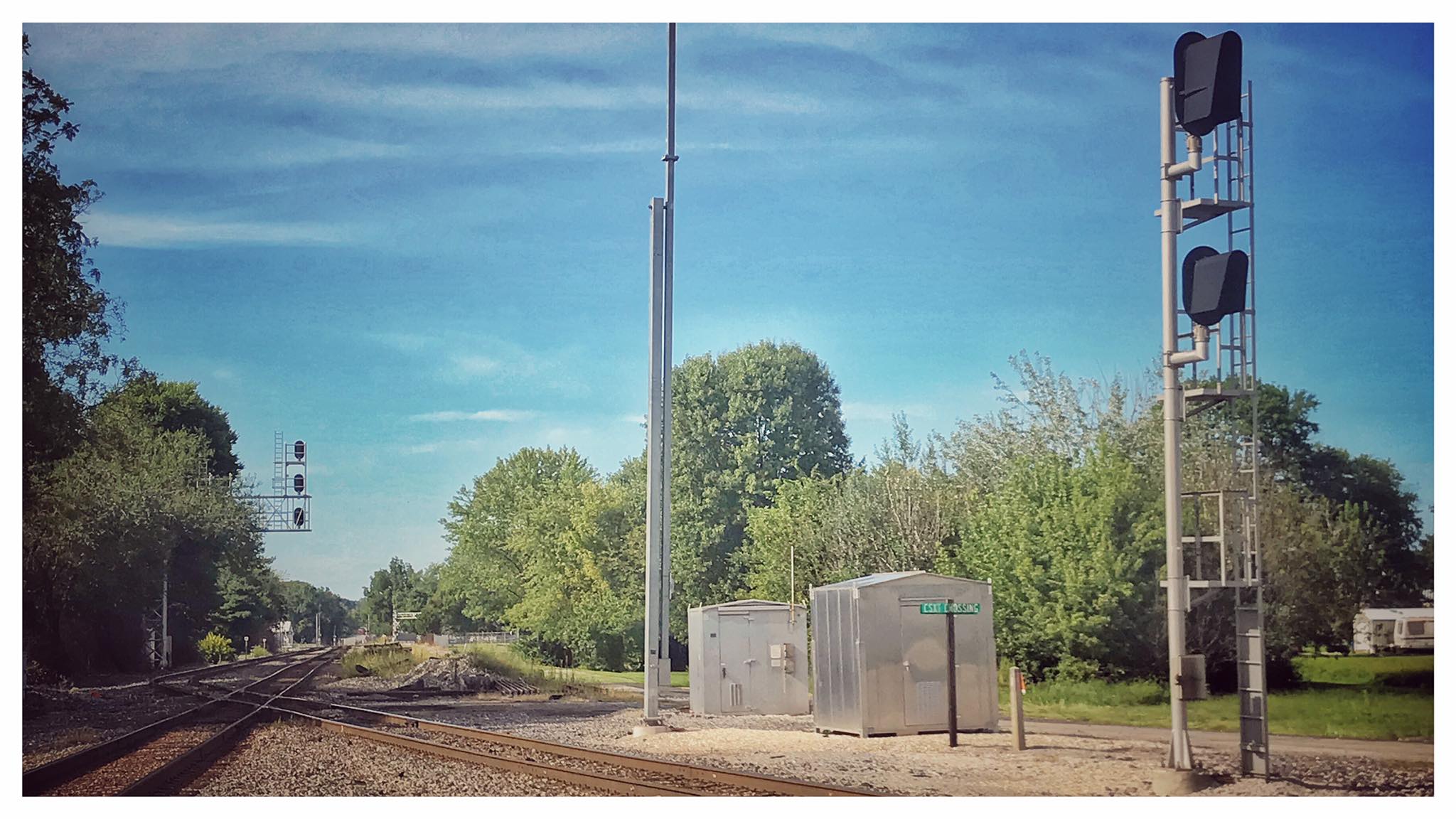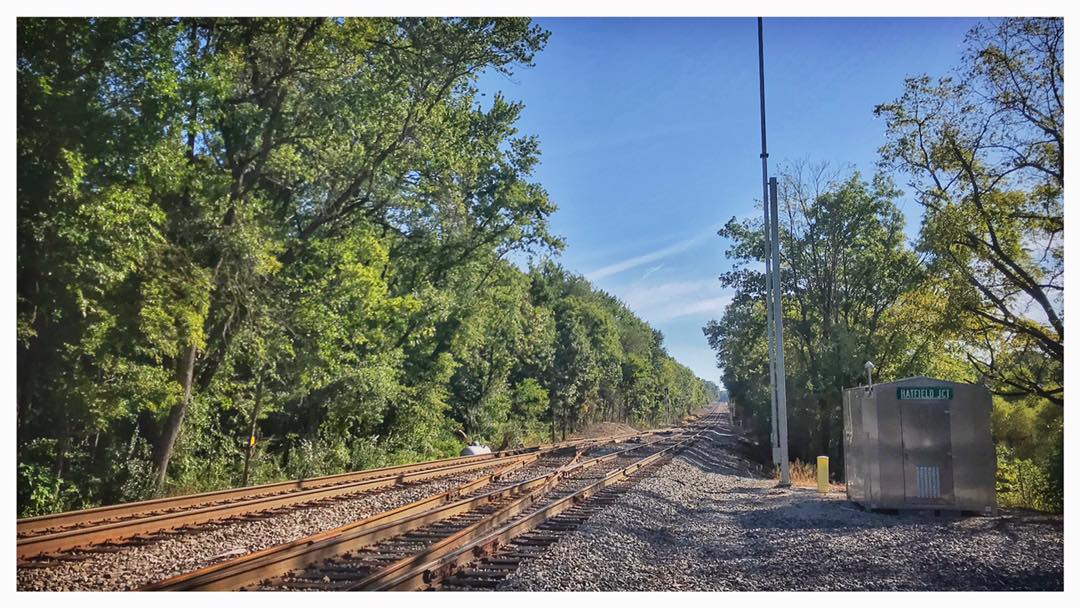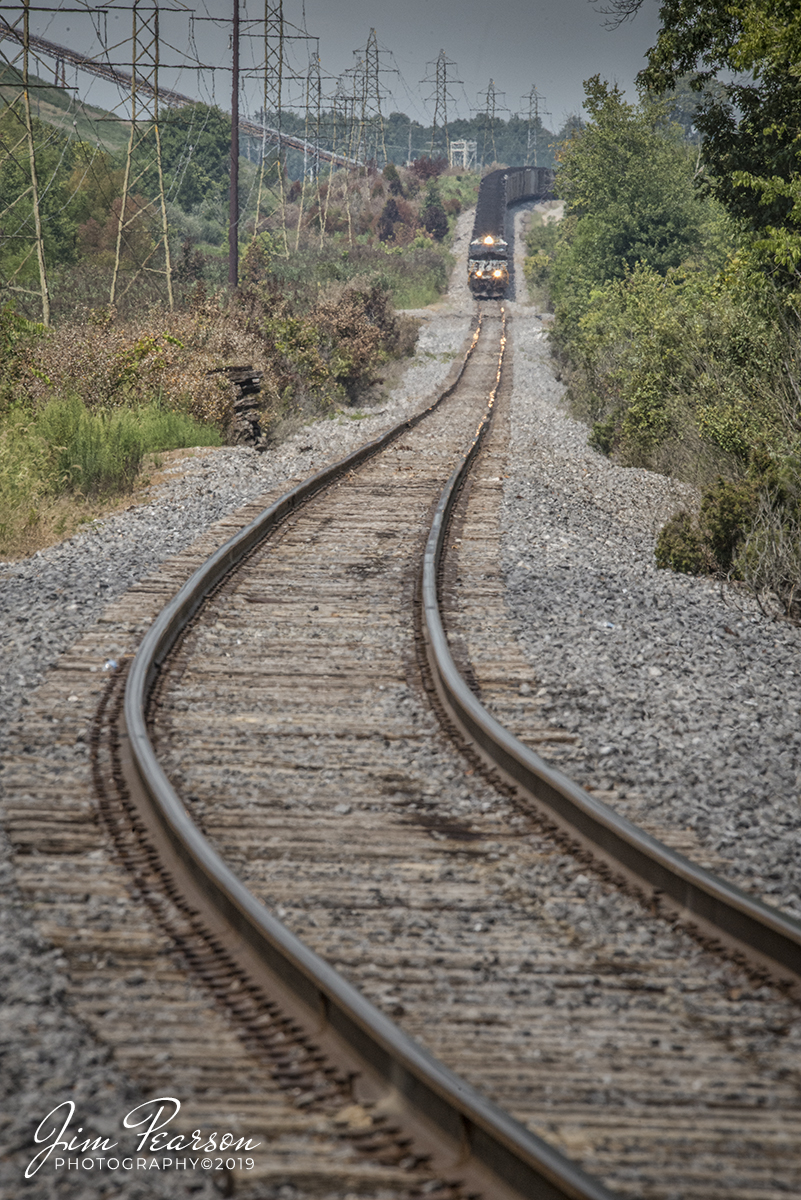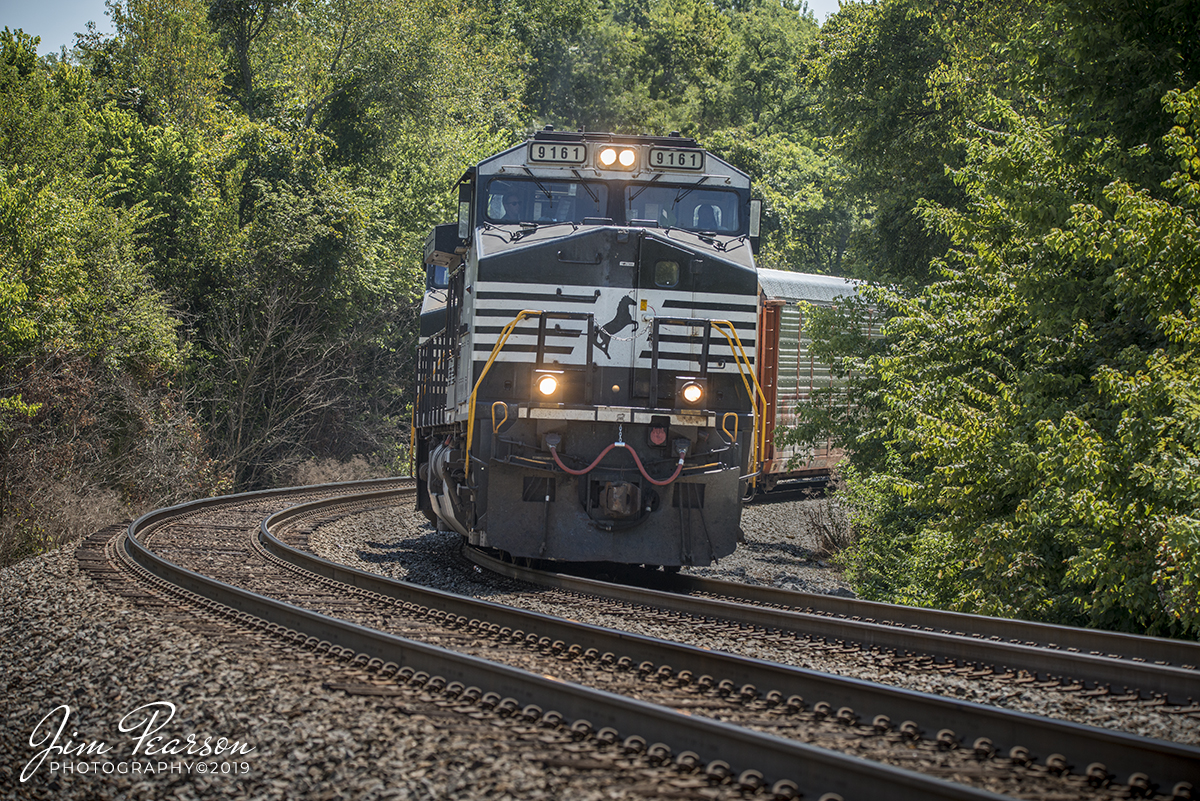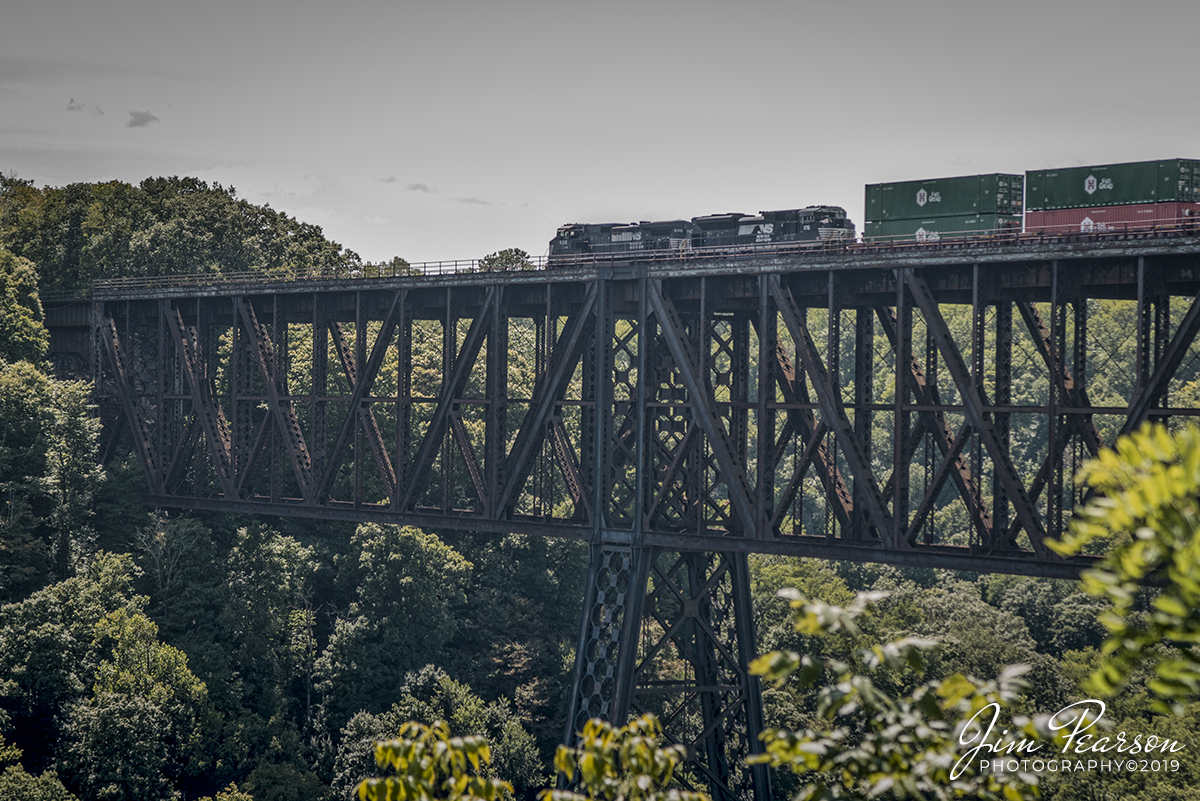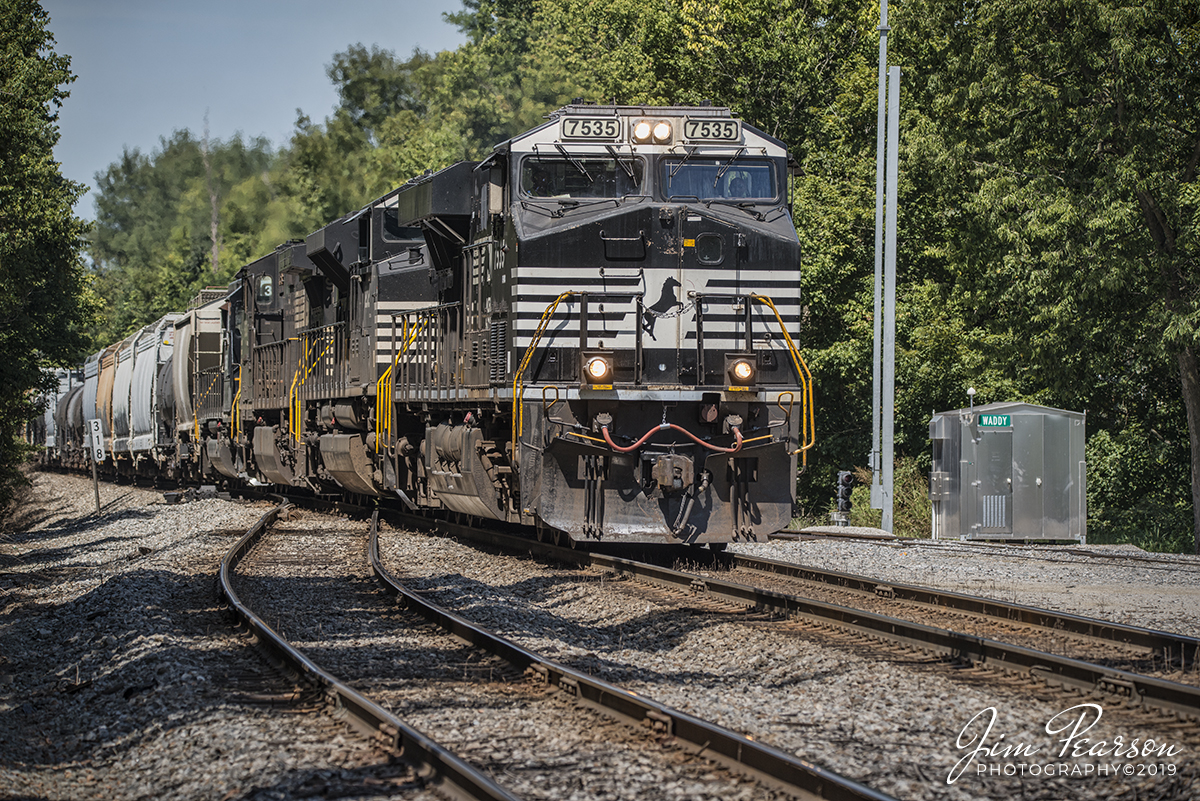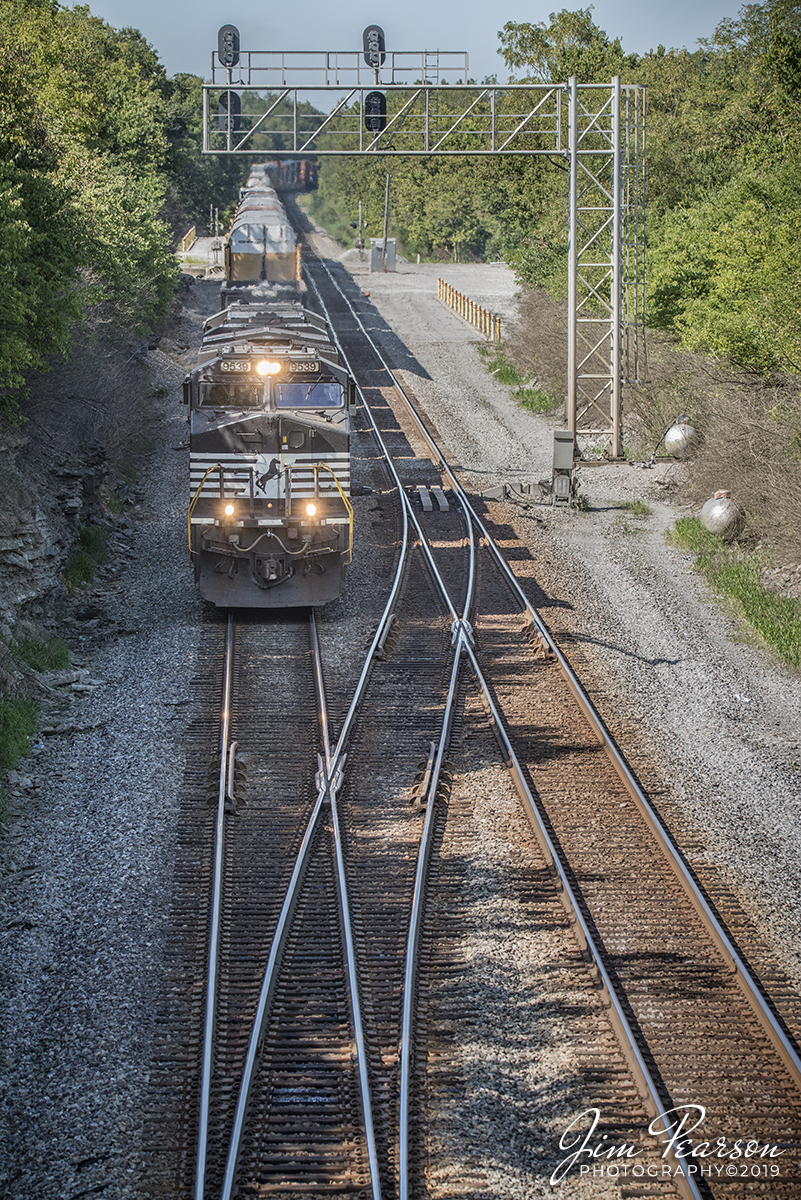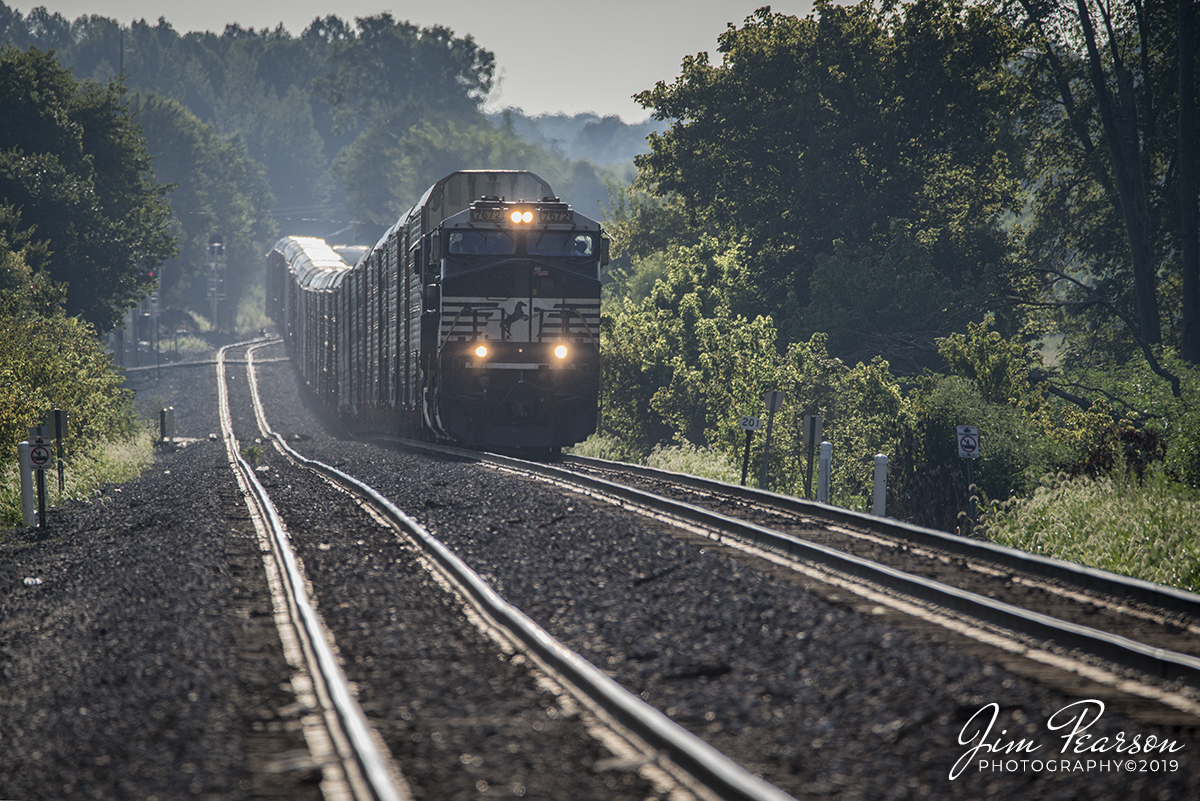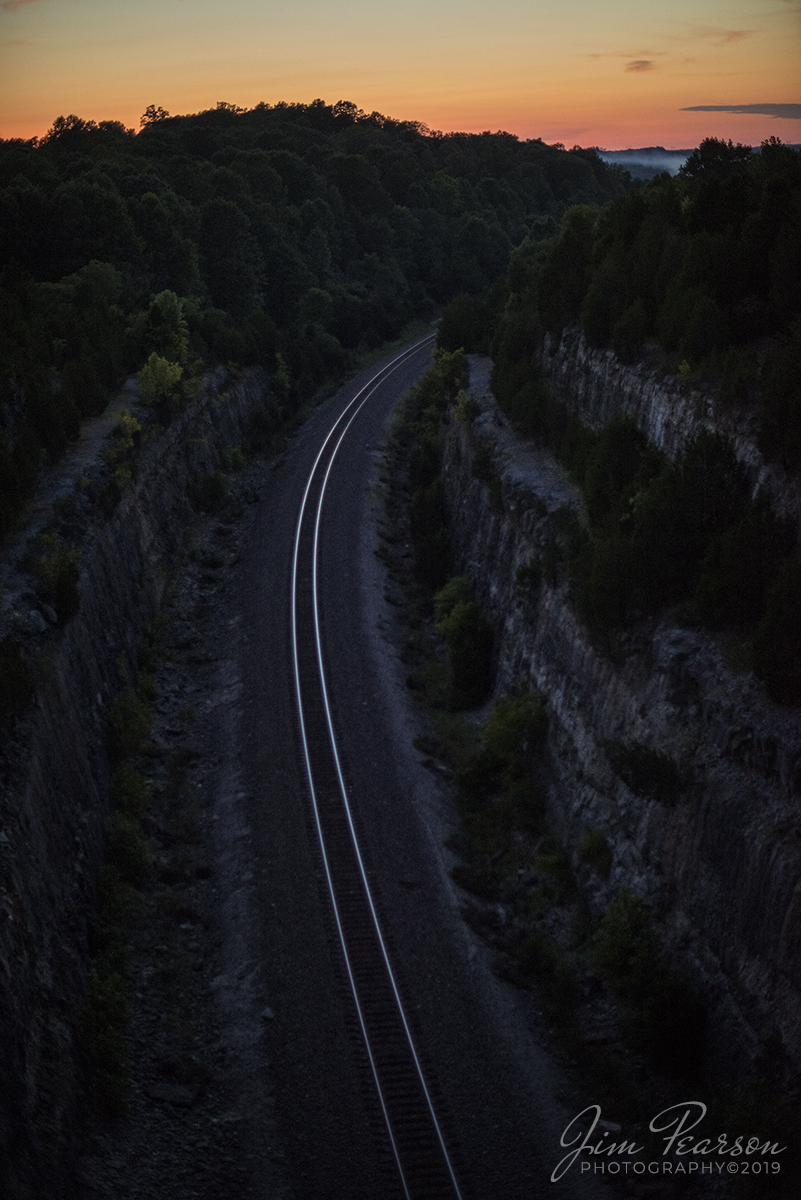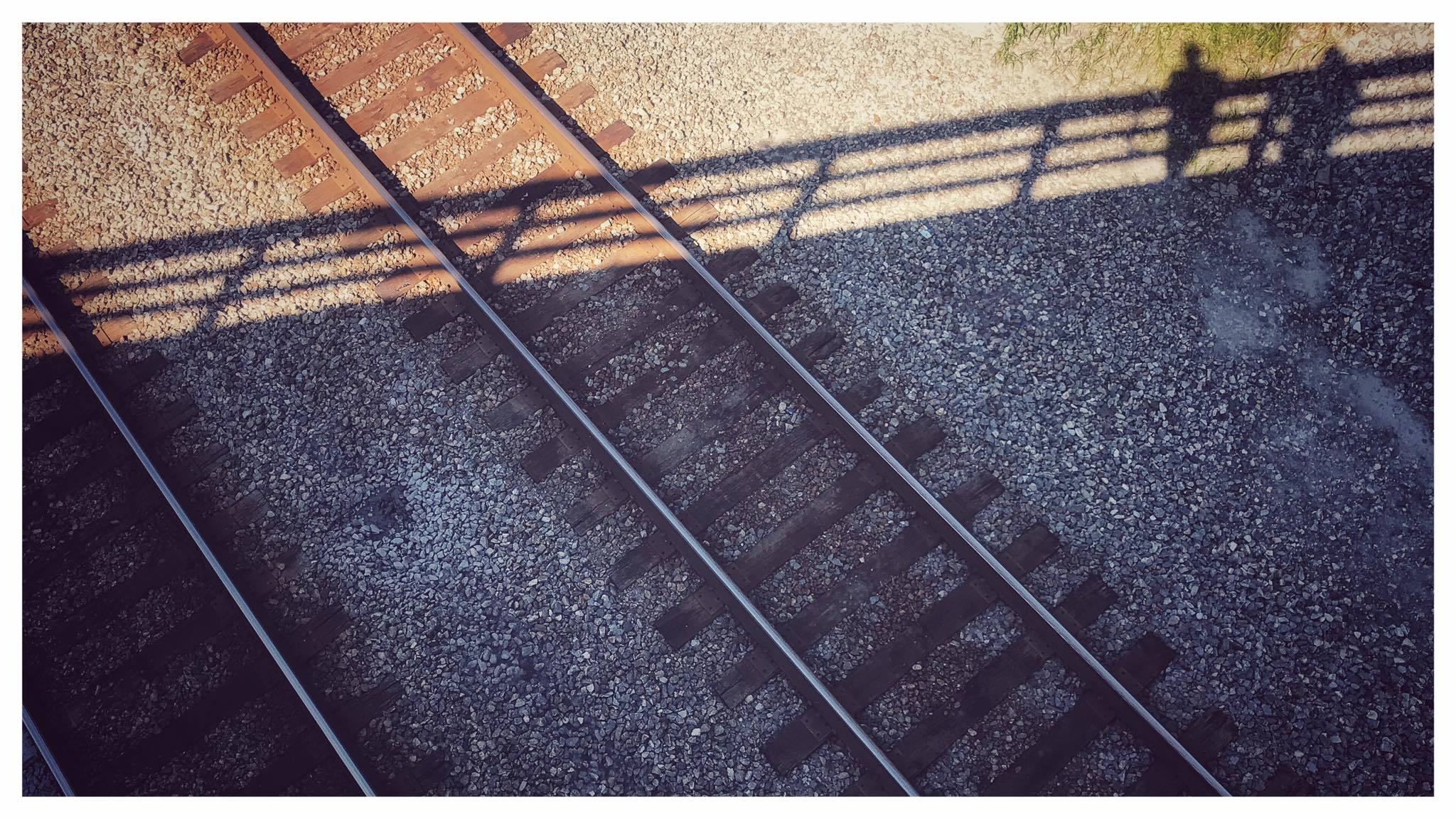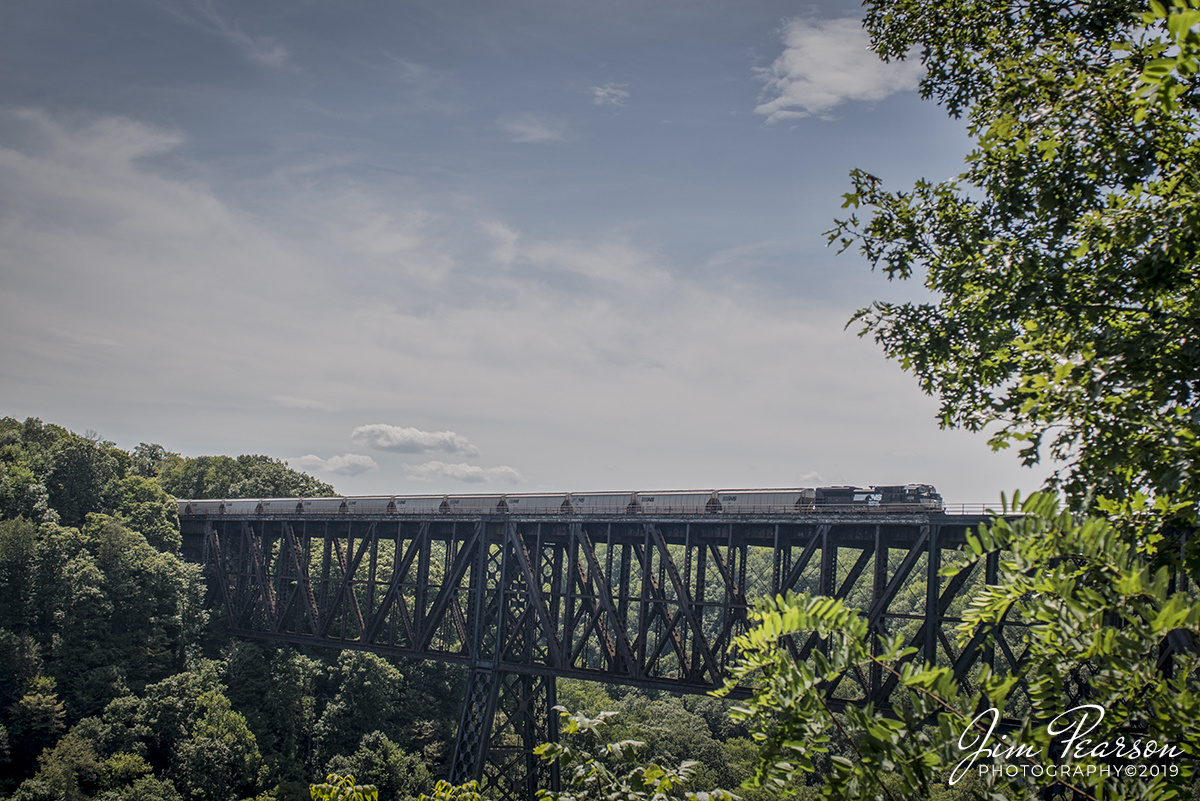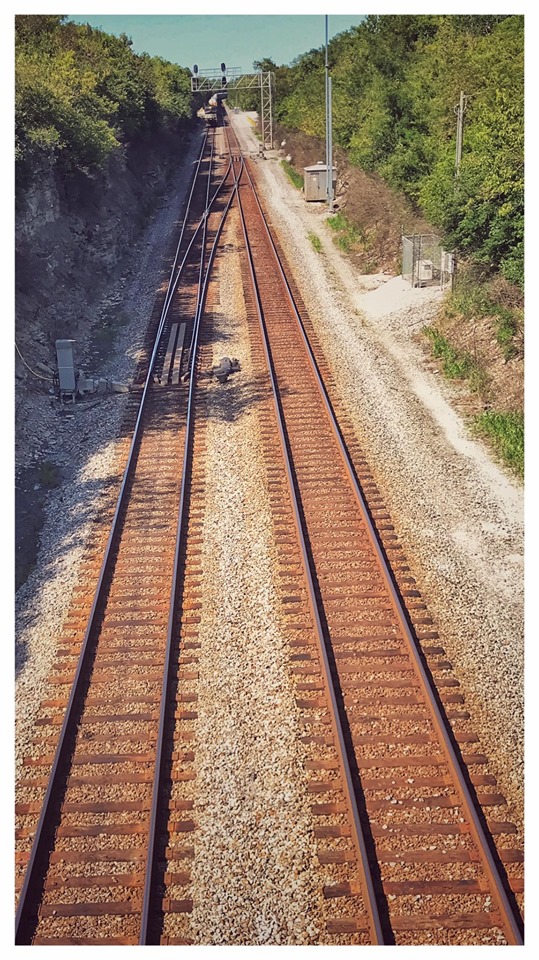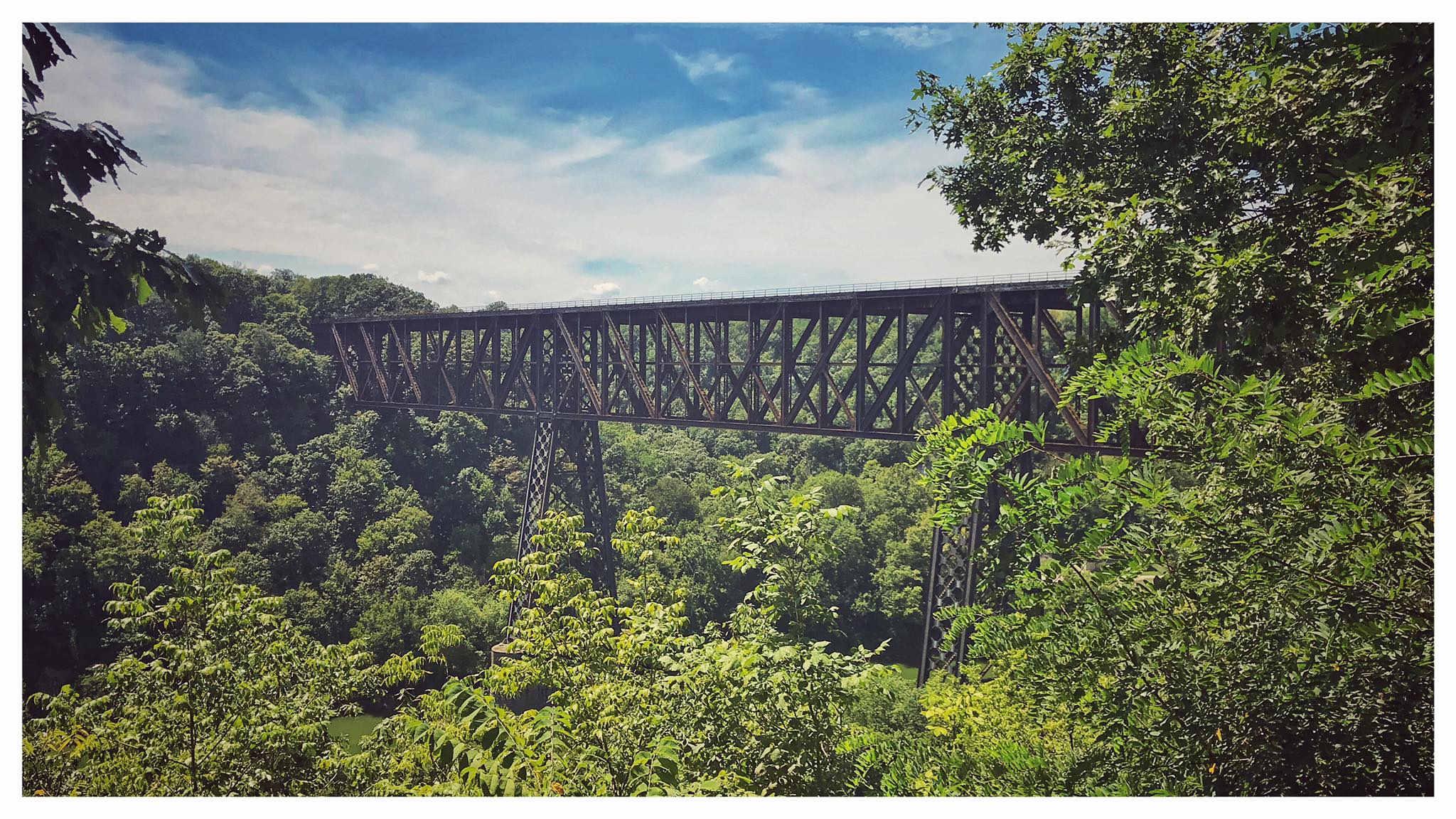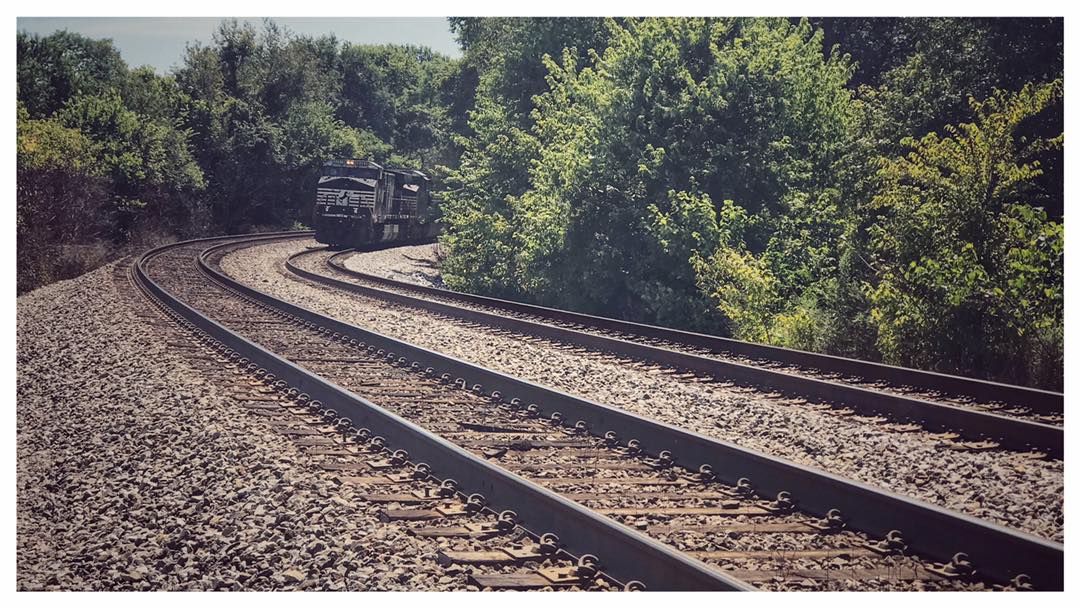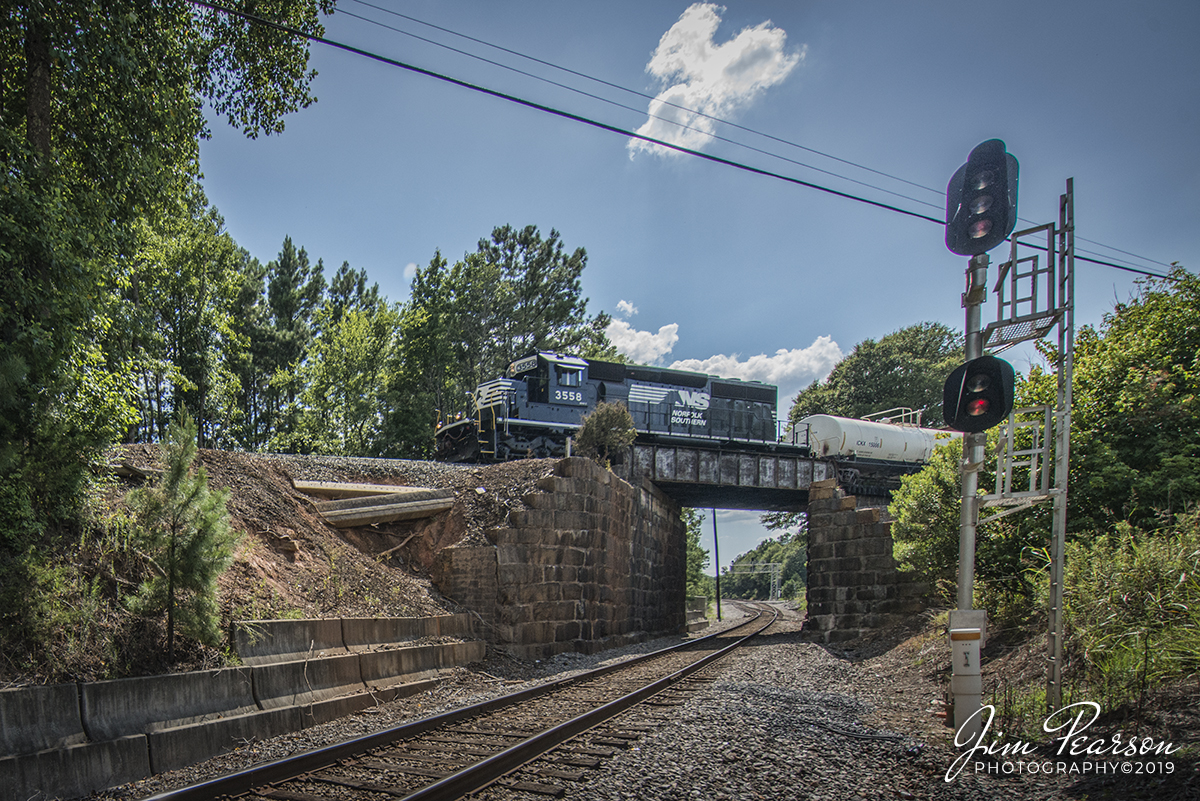August 31, 2019 – Norfolk Southern 975 departs Princeton, Indiana with NS 5642 “Training First Responders” unit pulling the Norfolk Southern Safety Train east on the NS Southern-East District at East Junction.
According to their website: At Norfolk Southern, safety is our number one priority. Operation Awareness & Response (OAR), was launched in 2015 to educate the public about the economic importance of the safe movement of hazardous materials by rail and to connect emergency first responders in Norfolk Southern communities with information and training resources.
The goal of OAR is to strengthen relationships with the first responders across the NS network. Norfolk Southern has been providing safety training for emergency responders through community outreach programs such as TRANSCAER® for years. OAR will build on those efforts focusing on closer relationships with local and state agencies, increased training opportunities (classroom, web-based, and on-line resources), table-tops drills and participation in full-scale exercises, and providing better resources for emergency responders such as the AskRail mobile app that allows and first responders to use their mobile phones to look up commodity and response information on shipments.
The OAR program also includes a continued commitment to providing emergency responders high-level training at the Security and Emergency Response Training Center (SERTC) in Pueblo, Co. In April 2016, Norfolk Southern unveiled a brand new safety train, with a dedicated locomotive, specially equipped classroom box cars, and several tanks cars for additional hands-on training along our lines.

